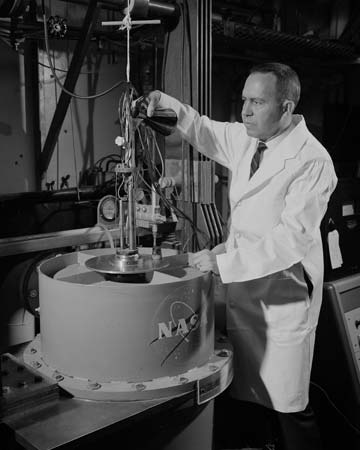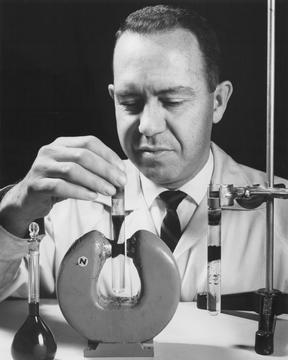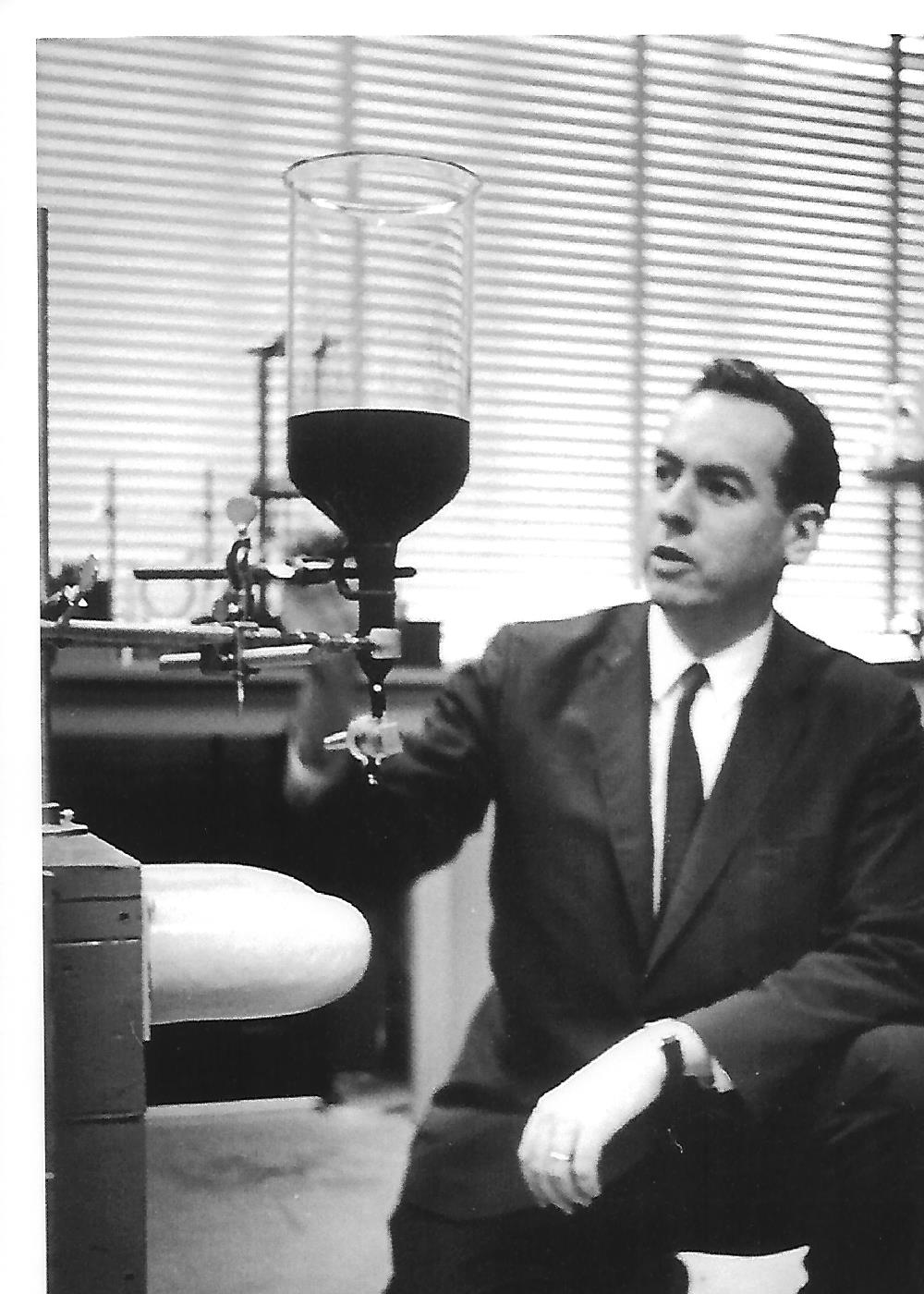A Brief History of Ferrofluid
Ferrofluid’s Roots
All magnetic materials known to man since their discovery were in solid forms, either as permanent magnets or soft magnetic materials. Although some kind of magnetic suspensions existed in the 1930s, it was the dream of man to create a durable, stable liquid magnet. The drive to create such a magnetic liquid came during the early years (1960s) of the NASA program.
Steven Papell at NASA was tasked with controlling and directing liquid rocket fuel in outer space. The absence of gravity allowed the fuel to float in the holding tank and it was therefore a challenge to pump the fuel efficiently into the rocket engine. Papell envisioned converting the nonmagnetic rocket fuel into a fuel having magnetic properties so that it could be controlled under zero gravity by powerful magnets or pumped through switching magnetic fields. Papell is credited in literature with the preparation of the first magnetic fluid, based on kerosene. He obtained a US patent in 1965.
This idea was never put into practice by the space agency, due to their preference for solid rocket fuel. By all modern standards, the magnetic fluid synthesized by Papell was crude and would not be practical for any present day applications. However, it set the foundation for intense scientific research and development on magnetic fluid technology.
The pioneering research funded by NASA under the technical leadership of Ron Rosensweig at AVCO Corporation, Wilmington, MA led to the development of a wide variety of early magnetic liquids for commercial use. The magnetization and stability of the fluids were greatly improved. The fluid mechanics of magnetic fluid phenomenon was recognized as a new branch of science and was named Ferrohydrodynamics.
Commercial use of ferrrofluid began in 1968 with the founding of Ferrofluidics Corporation by R.E. Rosensweig and R. Moskowitz. The official name for the product was given as ferrofluid. Since then, the company and the product have both changed a great deal, in both size and applications. To understand how ferrofluids are used in today’s world, let’s begin with an understanding of how ferrofluids are created.



